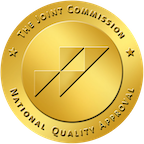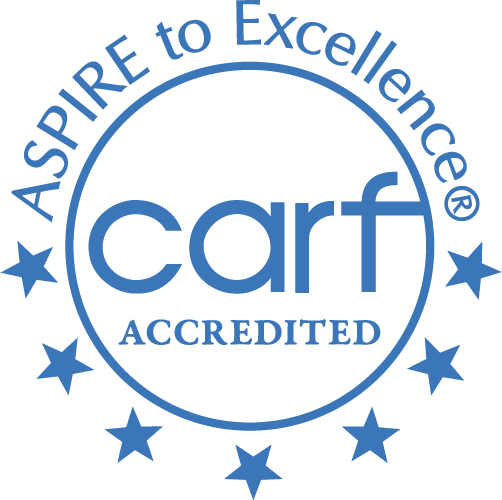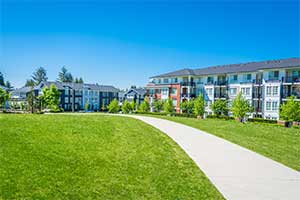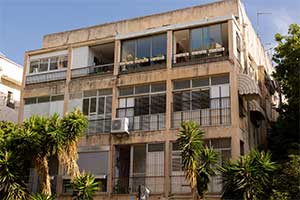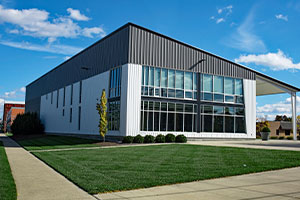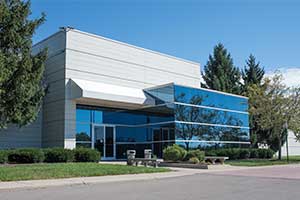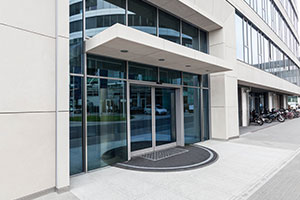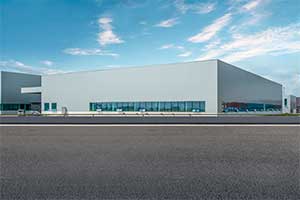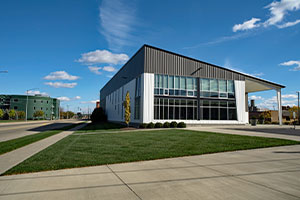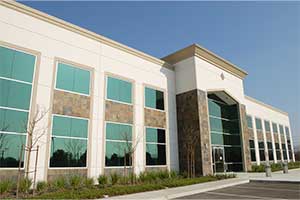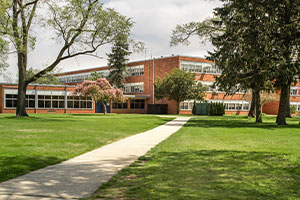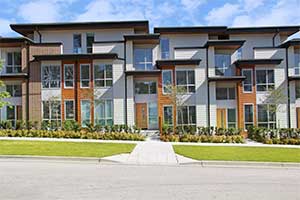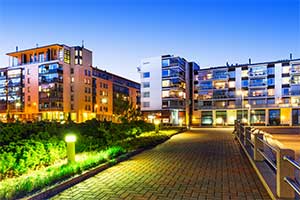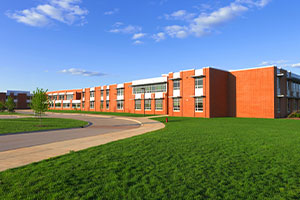Skip To Rehab Listing
Miami: A Problem Of Location
Miami, Florida—known for its hopping night life, rich influence of Cuban culture, and for its reputation as a destination for spring break partying—has long had a debilitating drug trafficking problem. The 1970s and 1980s were the heyday for the very public Miami drug war, depicted in pop culture by television shows like Miami Vice and movies like Scarface; in 1981, Miami was responsible for trafficking 70% of the country's cocaine & marijuana, and 90% of the US's counterfeit Quaaludes.
Situated along Florida's Atlantic coastline, and only 330 miles from Cuba, when it comes to the drug trade, Miami is in a rather precarious location. Airplanes and boats bring all kinds of potent drugs into the country, and it's nearly impossible for authorities to keep up. Primarily, the drugs come by boat. In 2014, the Mexican government launched a crackdown on the Mexican drug cartels, and this led South American and Central American drug makers to divert attention away from trying to cross the border into the US by land, and rather to focus their efforts in coming by sea. Narcotics are smuggled on everything from commercial vessels to small personal fishing rigs, and while most of the smuggling occurs in the pacific, an estimated 6-7% occurs via Caribbean routes. Currently, only about 1% of the drugs smuggled into the United States come by way of land through Mexico. Despite extensive law enforcement efforts in Miami and Florida at large, an estimated 70-80 percent of illegal drugs smuggling still occurs through Florida, bound for locations farther up the eastern seaboard.
The United States is the largest consumer of illegal cocaine in the world, and cocaine is one of the most abused drugs in Florida. In 2013, there was a 483% rise in cocaine washing up on Florida's beaches, compared to 2012. In 2016, Miami-Dade county (where Miami is located) reported 439 cocaine-involved fatalities. Marijuana is also heavily trafficked and in 2013, 114 pounds of marijuana washed up on beaches in Florida, suggesting an increase in boats attempting to smuggle it for sale into the U.S. Between 2012 and 2013, authorities in Florida seized 26,823 pounds of trafficked marijuana!
So while blessed with a golden location—one that allows for miles and miles of white sandy beaches, and sunshine year-round—Miami is also cursed with a drug trafficking problem that it may never be able to get a handle on.
Treatment Service Settings and Treatment Methods
Miami's many rehabilitation centers, a number of which are listed below, address a problem that is prevalent in cities throughout the United States: substance abuse. These facilities combat this issue locally by providing sites and programs that are convenient for clients within the area. These settings include: long term rehabs, outpatient individual counseling, inpatient drug and alcohol rehab programs, short term treatment programs, detox facilities.
Alcohol and drug rehab programs utilize many methods, from long-established approaches to newer approaches such as: matrix model, individual psychotherapy, brief intervention approach, substance abuse counseling approach, activity therapy, couple/family therapy. The result is a variety of resources that clear the path to attainable lasting recovery for many patients.
Special Programs for Addiction Offered by Rehab Facilities
Those struggling with alcohol or drug addiction generally require customized support to get their lives back. That is why alcohol and drug rehab centers in Miami deliver special services that help clients within their particular circumstances. Some of these resources are listed here: legal advocacy, child care for clients children, social skills development, self-help groups, suicide prevention services, clients referred from the court/judicial system.
Rehab Payment Alternatives in Miami
Patients are faced with diverse economic situations, which is why substance abuse treatment centers offer several payment alternatives, such as: private pay, private health insurance, medicaid, medicare, military insurance, access to recovery (atr) voucher, county or local government funds.
Payment should never be an obstacle to substance abuse treatment. Rehab centers direct clients toward the funding opportunities that fit their individual budgetary concerns.
With a variety of facilities, rehabs, services, modalities and payment alternatives, Miami offers clients several alternatives when it comes to seeking treatment from addiction.
Commonly Asked Questions about Addiction and Treatment
What are the symptoms of alcoholism?
Alcoholism, also known as Alcohol Use Disorder (AUD), is a chronic condition characterized by an inability to control alcohol consumption despite adverse consequences. The symptoms of alcoholism can vary among individuals but typically include a combination of physical, psychological, and behavioral signs. Some common symptoms include:
- Increased tolerance: A need for increasing amounts of alcohol to achieve the same desired effect, or experiencing diminished effects with continued use of the same amount.
- Withdrawal symptoms: Experiencing physical and psychological symptoms when not drinking, such as tremors, sweating, nausea, anxiety, irritability, or insomnia.
- Loss of control: An inability to limit alcohol consumption, often drinking more or for a longer period than intended.
- Neglect of responsibilities: Failing to fulfill work, school, or family obligations due to alcohol use.
- Social isolation: Withdrawing from social activities or hobbies once enjoyed, in favor of drinking.
- Continued use despite consequences: Continuing to consume alcohol despite negative consequences, such as relationship problems, health issues, or legal troubles.
- Cravings: Experiencing strong urges or cravings to drink alcohol.
- Unsuccessful attempts to quit: Repeated attempts to cut down or quit drinking, without success.
- Risky behavior: Engaging in risky behaviors while under the influence of alcohol, such as driving, operating machinery, or engaging in unprotected sex.
- Time spent on alcohol: Spending a significant amount of time obtaining, consuming, or recovering from the effects of alcohol.
- Physical dependence: Developing a physiological reliance on alcohol, leading to withdrawal symptoms when alcohol consumption is reduced or stopped.
- Neglect of self-care: Neglecting personal hygiene, nutrition, or overall well-being as a result of alcohol use.
How does a person become addicted to drugs and alcohol?
Addiction to drugs and alcohol is a complex process involving a combination of genetic, environmental, psychological, and social factors. While not everyone who uses drugs or alcohol will become addicted, certain factors can increase an individual's vulnerability to addiction. Some key factors contributing to addiction include:
- Genetic predisposition: Genetics play a significant role in addiction, accounting for an estimated 40-60% of an individual's vulnerability. People with a family history of addiction may be more susceptible to developing a substance use disorder.
- Environmental influences: A person's environment can significantly impact their likelihood of developing an addiction. Factors such as exposure to drugs or alcohol, peer pressure, low socioeconomic status, and lack of parental supervision can contribute to substance use and potential addiction.
- Early initiation: Research indicates that individuals who begin using drugs or alcohol at an early age are at a higher risk of developing addiction later in life. Early exposure to substances can disrupt normal brain development, making it more challenging to resist addictive behaviors.
- Psychological factors: Mental health disorders, such as depression, anxiety, or trauma-related disorders, can increase the risk of addiction. Individuals may turn to drugs or alcohol as a coping mechanism for managing emotional distress, which can lead to dependence and addiction.
- Social factors: Social isolation, lack of support networks, or unhealthy relationships can contribute to addiction. Individuals may use drugs or alcohol to fill a void or establish connections with others, increasing their risk of developing a substance use disorder.
- Chronic use: Repeated exposure to drugs or alcohol can lead to physiological changes in the brain's reward and pleasure centers. Over time, these changes can result in the development of tolerance, dependence, and ultimately addiction.
- Route of administration: The method by which a substance is consumed can impact the likelihood of addiction. Faster-acting routes of administration, such as injecting, smoking, or snorting, can lead to a more rapid onset of pleasurable effects, increasing the risk of addiction.
Why do drug addicts blame everyone but themselves?
Drug addiction can significantly distort a person's thinking patterns and perceptions, leading them to behave in ways that are often self-protective and defensive. One of these behaviors can be a tendency to shift blame onto others. This occurs for a few reasons:
- Denial: One of the key psychological symptoms of addiction is denial. This is a defense mechanism that allows individuals to avoid confronting the reality of their addiction and its negative consequences. By blaming others, they deflect responsibility and maintain their state of denial.
- Avoiding Shame and Guilt: Addiction often carries a heavy burden of guilt and shame. Blaming others can be a way for individuals struggling with addiction to avoid these painful feelings and protect their self-image.
- Rationalizing Behavior: Blaming others can serve as a way for individuals to justify their drug use and associated behaviors. If they can convince themselves that their actions are a response to the actions of others, they may feel more justified in continuing their substance use.
- Fear of Consequences: Acknowledging personal responsibility could mean having to face significant consequences, including damage to relationships, legal issues, or the need for treatment. Blaming others allows the person to avoid these potential repercussions.
- Altered Brain Function: Drug abuse can lead to changes in the brain that impact judgment, decision making, learning, and behavior control, which might lead to a tendency to shift blame onto others.





